Little Rock, AR has a lot to offer current residents and those who are thinking about moving to the city.
The capital city of Arkansas boasts a rich history, diverse culture, and natural beauty.
Situated near the center of the state, this largest city in Arkansas has these pros and cons that people likely want to consider before moving to Little Rock.

Contents
Pros of Living in Little Rock AR
Southern Charm and Hospitality
The Southern charm and hospitality that the South is known for is very much alive in Little Rock, Arkansas.
Many long-term residents are likely to agree that the warmth that people felt when they first moved to the area is still there years later.
New residents who experience the welcoming vibe will feel at home as they experience having friendly neighbors and shopkeepers and enjoy the local hospitality.
Low Cost of Living
The cost of living in Little Rock, Arkansas is lower than the national average.
Local Observer points out that the median home value is 25 percent lower than the national average.
The median rent for a rental property in Little Rock is 23 percent lower than the national average for a rental property.
The cost of groceries, health care, and the cost of utilities are all lower than the national average for these expenses.
Climate and Weather in Little Rock
The climate and weather are popular reasons that people consider moving to Little Rock.
The average temperature in the city is 83 degrees Fahrenheit during the summer months.
The temperature averages around 48 degrees during the winter but can get down into the 20s.
Little Rock, AR gets an average of 54 inches of precipitation each year.
Most of the precipitation comes from an average of 51 inches of annual rainfall.
Although the average rainfall is more than the national average, the nice average temperature still attracts many people to the area.
The city averages 217 sunny days per year, compared to the national average of 205 days of sunshine.
People who enjoy a hot summer will like living in a city where more than 60 days average above 90 degrees Fahrenheit.
Little Rock History and Landmarks
Little Rock has a rich history and is home to several notable landmarks.
The Clinton Presidential Library and Museum provides visitors with the opportunity to see artifacts and replicas of the Oval Office and the Cabinet Room as they were when Bill Clinton served as President of the United States.
The Little Rock Central High School National Historic Site educates residents and visitors about the important role of the Little Rock Nine during the Civil Rights Movement.
The students played a crucial role in school desegregation in the U.S. when they integrated Little Rock Central High School in 1957.
Some other historical sites and landmarks include the Old Statehouse Museum and the MacArthur Museum of Arkansas Military History.
Natural Beauty of Little Rock
The natural beauty of the area is a reason that people enjoy living in Little Rock.
The stunning views at Pinnacle Mountain State Park and the serenity of gazing out at the water at Two Rivers Park are just two examples of the natural beauty awaiting residents and visitors.
The nature and wildlife along the Arkansas River, the Vogel Schwartz Sculpture Garden, and the other parks and nature trails showcase Little Rock’s natural beauty.
Enjoy biking, walking, hiking, or fishing while enjoying the natural beauty of the area.
Little Rock Diversity
The diversity of Little Rock, AR may attract some people to the area.
Local Observer indicates that the race and ethnicity of the city include:
- 45.9 percent white, compared to more than 70 percent of the state population being white
- 40.9 percent black, compared to the state population being just 15.1 percent African-American
- 7.5 percent Hispanic, closely related to the state population being 7.6 percent Hispanic
- 3 percent Asian, with just 1.5 percent of the state population identifying themselves as Asian
Some residents are American Indian, Hawaiian, and multiracial.
Little Rock ranks above both the state average and the national average in terms of diversity.
Affordable Childcare
Arkansas ranks in the top 10 states for affordable childcare, coming in at the number eight position in the results of one survey.
Little Rock parents are more likely to be able to afford childcare than parents in some other southern cities.
Parents who have access to affordable, high-quality childcare are less likely to miss work or be late for work.
There are more than 250 childcare providers in Little Rock, Arkansas.
Little Rock Cultural Events
Little Rock highlights its dedication to community and culture through a variety of cultural events, festivals, and activities throughout the year.
The annual Little Rock Film Festival showcases the best in documentaries, short films, and other categories of films from around the globe.
The festival has screened hundreds of films from dozens of countries.
The attendance for the annual event often surpasses 25,000 people.
The Arkansas State Fair and the Hispanic Heritage Celebration highlight the culture and heritage of Little Rock, as does the Mosaic Templars Cultural Center, and the Historic Arkansas Museum.
Cons of Living in Little Rock, AR
Exposure to Allergens
People who have seasonal or environmental allergies may have a tough time with their symptoms in Little Rock.
Pollen, dust mites, and other allergens, particularly during the spring and fall, may leave allergy sufferers with a variety of symptoms.
Mold may develop during the particularly wet, rainy days in Little Rock.
Allergy symptoms may lead some residents to try to eliminate or reduce their exposure to the allergens.
Lack of Public Transportation
The lack of access to public transportation in Little Rock means that you need access to a car.
Little Rock, Arkansas has no light rail system or subway system.
The local bus system in Little Rock serves only limited areas of the city, which means that residents in some areas have no access to public transportation at all.
Poverty in Little Rock
The median household income is considerably lower in Little Rock, compared to the national average.
The median household income in the U.S. is $57,652.
The median household income for Little Rock, Arkansas is just $48,463.
Future job growth in Little Rock is also expected to be lower than the national average.
High Crime Rate
The high crime rate in Little Rock is something to consider before moving to the area.
Mover Junction indicates that Little Rock residents have a one in 54.1 chance of being a victim of a violent crime.
The average violent crime rate in the U.S. is 22.7.
Compare that to the violent crime rate in Little Rock, which is 72.1.
The Little Rock property crime rate of 95.0 is higher than the U.S. average property crime rate of 35.4.
Lack of Vibrant NightLife
People who look forward to being the life of the party may find that there is a lack of vibrant nightlife in Little Rock.
Yes, there are bars and nightclubs, but not as many as there are in many other U.S. cities.
Most attractions that people visit and many of the activities that residents engage in are more geared towards the arts and culture scene, not a vibrant nightlife scene.
Public School Ratings
Public schools in Little Rock are often ranked low on sites that rank schools.
Public School Review gives Little Rock Public Schools a 3/10 rating, which means that the public school test scores are in the bottom 50 percent among all Arkansas public schools.
Little Rock schools have a lower proficiency score in both reading and math than the state proficiency scores for those subjects.
Slow Job Growth
Job growth is slower in Little Rock compared to some other areas.
The Little Rock AR job growth over the past year was just 0.1 percent.
Recent job growth and future job growth for the city are lower than the national average.
The salary for people working in the Little Rock area is lower than the average salary for workers in the U.S.
An estimated 47 percent of Little Rock residents make less than $50,000 per year.
Dangerous Animals
Arkansas is home to six venomous snakes.
The University of Arkansas Division of Agriculture Research & Extension lists the snakes, which include the eastern copperhead snake, the timber rattlesnake, the western diamondback rattlesnake, and the western pigmy rattlesnake.
The Texas Gulf Coast coral snake and the northern cottonmouth snake also live in Arkansas.
Watch out for the wildlife when hiking, biking, and walking. Bobcats, cougars, and other animals seem to enjoy residing in and around Little Rock.
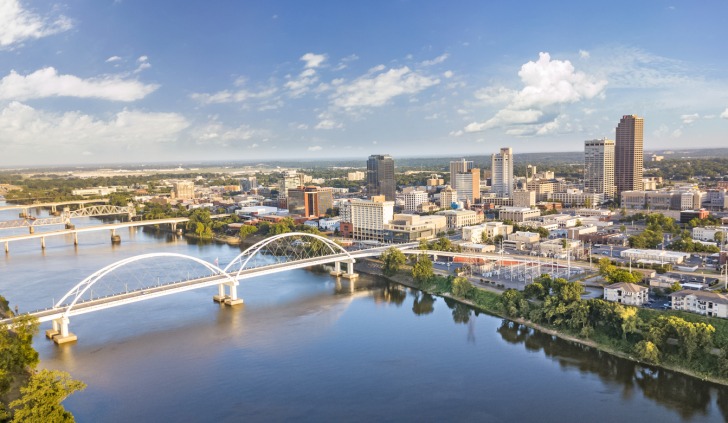
Pros and Cons of Living in Little Rock, AR – Summary Table
| Pros of Living in Little Rock AR | Cons of Living in Little Rock, AR |
|---|---|
| 1. Southern Charm and Hospitality | 1. Exposure to Allergens |
| 2. Low Cost of Living | 2. Lack of Public Transportation |
| 3. Climate and Weather in Little Rock | 3. Poverty in Little Rock |
| 4. Little Rock History and Landmarks | 4. High Crime Rate |
| 5. Natural Beauty of Little Rock | 5. Lack of Vibrant NightLife |
| 6. Little Rock Diversity | 6. Public School Ratings |
| 7. Affordable Childcare | 7. Slow Job Growth |
| 8. Little Rock Cultural Events | 8. Dangerous Animals |
Little Rock Safety Overview
READ THE FULL REPORT: Little Rock Safety Review
Safety Index: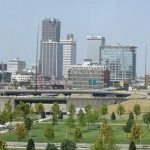
- OVERALL RISK: HIGH
- TRANSPORT & TAXIS RISK: MEDIUM
- PICKPOCKETS RISK: LOW
- NATURAL DISASTERS RISK: MEDIUM
- MUGGING RISK: MEDIUM
- TERRORISM RISK: MEDIUM
- SCAMS RISK: LOW
- WOMEN TRAVELERS RISK: MEDIUM
Frequently Asked Questions
Do all Little Rock neighborhoods have a higher-than-average crime rate?
No, several areas of Little Rock are safer than some of the other neighborhoods.
Does Little Rock have any free activities?
Discover many free things to see and do in Little Rock. Visit the Big Dam Bridge, the longest pedestrian bridge in North America.
Enjoy the bike paths, the walking paths, and the gardens at Two Rivers Park, which is a 1,000-acre park.
Fourche Creek Wetlands is one of the largest wetlands in the U.S. Visit the Witt Stephens Jr. Central Arkansas Nature Center, a natural history museum.
Are there any colleges or universities in Little Rock, AR?
There are several colleges located in Little Rock, including the University of Arkansas at Little Rock, Philander Smith College, and Pulaski Technical College.
Baptist Health College and 26 other colleges and universities are located within 30 miles of Little Rock.
Why do people move to Little Rock, Arkansas?
Some reasons that people choose to move to Little Rock, Arkansas include the low cost of living, the great outdoor activities, and the quality of life.
Do all the public schools in Little Rock have low test scores?
Several Little Rock public schools have higher test scores, compared to the test scores of some other public schools.

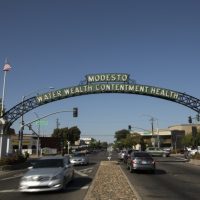
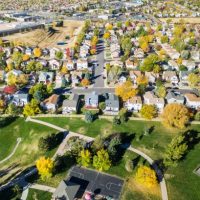
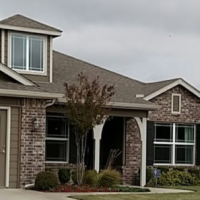








Having lived as a transplant to Little Rock from far-elsewhere, I think the accuracy of the article is impressive, especially on the ‘subjective’ aspects of how one feels living there. Are the author(s) from Little Rock? I would have to guess, yes.